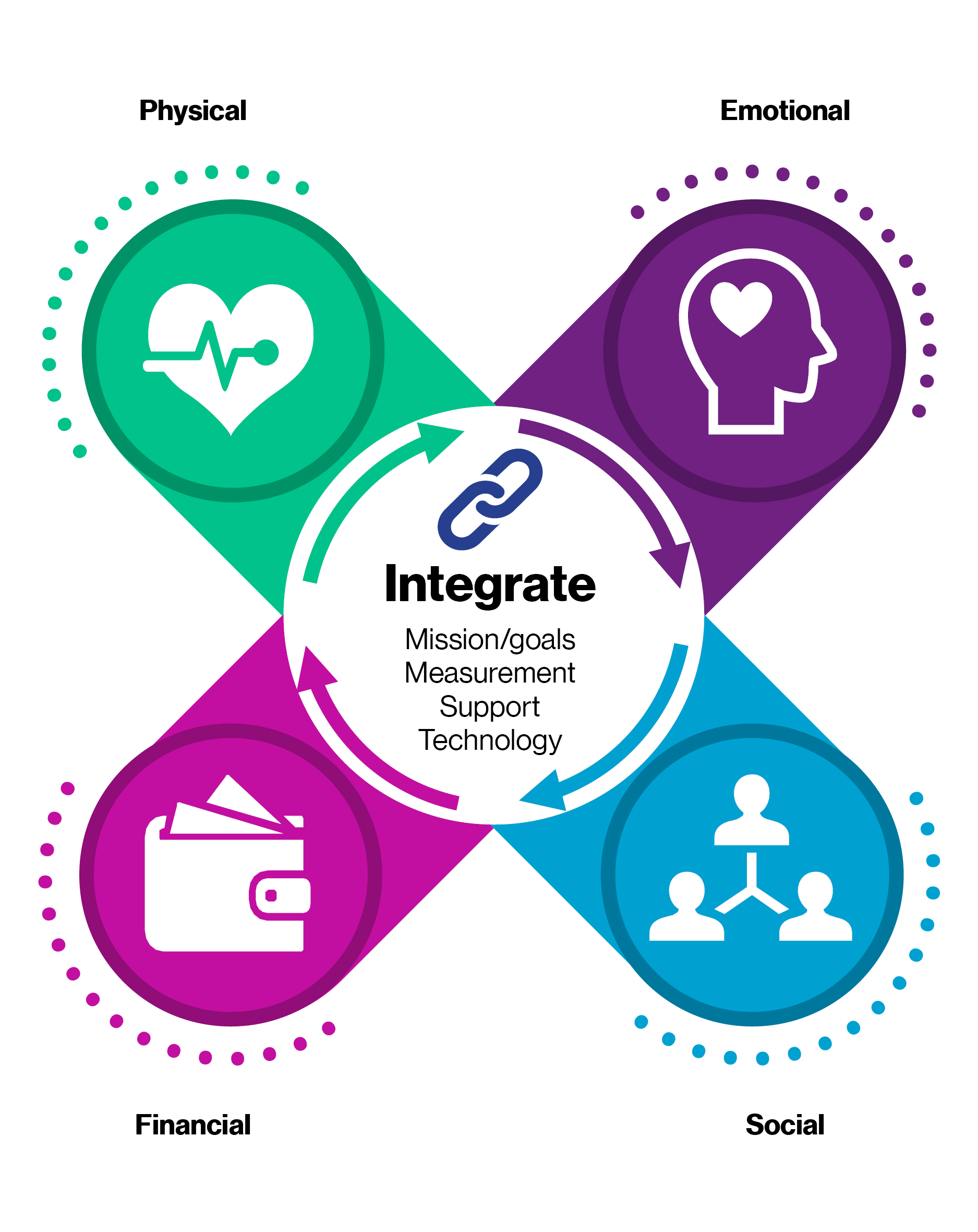By benchmarking against industry or best practice companies, we help you evaluate the impact of wellbeing programmes on business outcomes and performance.
We believe the ideal state of employee wellbeing is achieved when employees are physically thriving, emotionally balanced, financially secure and socially connected. These are the four key dimensions of our wellbeing approach. Our Wellbeing Diagnostic scorecard places the employee at the center and is truly integrated across all four dimensions.

How does the Wellbeing Diagnostic work?
The Wellbeing Diagnostic combines high-level wellbeing data points across the 4 pillars with a current state benchmark of best practice programs and policies offered. By combining the current state benchmark against an integrated wellbeing score of metrics we can quickly draw high level insights to identify areas of focus for a wellbeing strategy and program. For example, do we have a program offering gap or do we seemingly offer the right programs but are not seeing the expected outcomes and therefore need to evaluate the delivery of such programs whether that is through leadership involvement, physical environment, communications, general awareness, etc.? This combines our best-in-class research and specific client data to draw insights and inform a focused strategy.
The Current State Benchmark uses a range of statistical analyses and expert review based on 40 best practices the yields a weighted score across five major categories:
- Physical wellbeing
- Emotional wellbeing
- Financial wellbeing
- Social wellbeing
- Integrated implementation
Your Current State benchmark represents the percentile – where your company is positioned – compared to the wellbeing practices of industry peers and best-practice companies. This score helps you identify strengths and weaknesses, including any gaps in programs, as well as design or delivery issues, in your wellbeing initiatives.
Wellbeing Programs and Practices evaluated as part of current state benchmarking
Physical
- Integrated health and safety
- Ergonomics assistance
- Onsite/near-site services
- Personalized tools
- Physical environment
- Treatment decision-support
- Navigation support services
- Targeted clinical conditions
Financial
- Measure using HR data
- Use metrics at pivotal moments
- One-on-one counseling
- Personalized decision-support
- Support borrowing, spending decisions
- Monitor group rates for borrowing
- Promote family financial decisions
Emotional
- Strategy/action plan
- Psychological safety
- Measure stress
- Redesign EAP
- Programs to support chronic issues
- Resilience training
- Manager training
- Parental leave
Social
- Link to corporate social responsibility
- Incorporate I&D into benefit designs
- Support volunteerism
- Support compassionate donations
- Use social recognition
- Local wellbeing champions
- Key influencers to drive messages
In addition, employers should listen to their employees through an effective listening strategy. This will help to better understand the wellbeing needs of their workforce needs and to address them at every stage of life.
The employee wellbeing diagnostic survey can support to measure the state of employee wellbeing. Employees answer a short survey, and the results are aggregated automatically into an online dashboard. Employers can view a deep dive into the scores for each question broken down by for example gender, age, tenure, department, or different locations.
Download
| Title | File Type | File Size |
|---|---|---|
| 2022 a practical approach to wellbeing | 1 MB |







